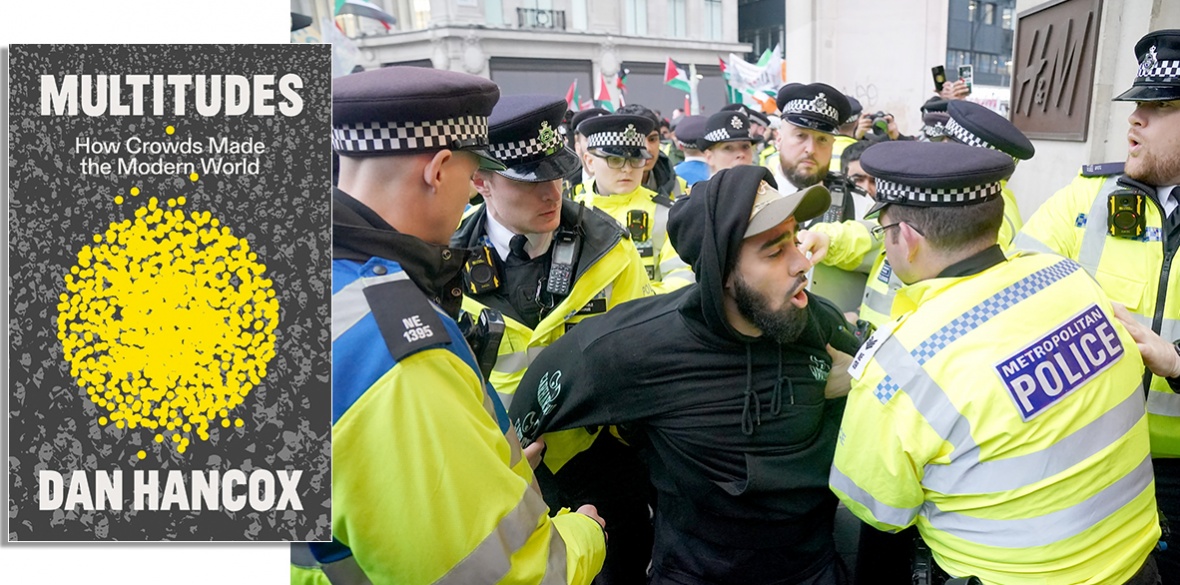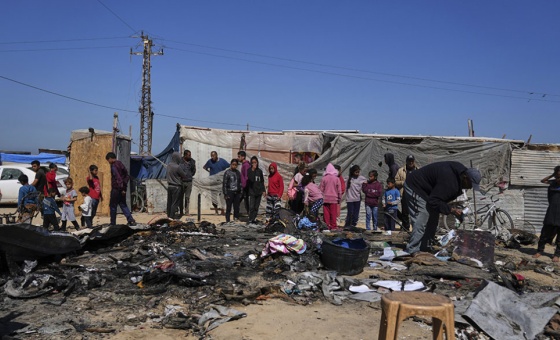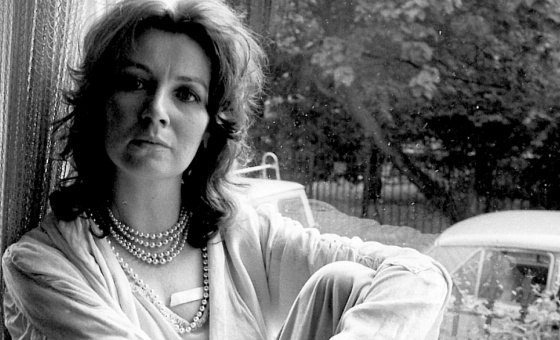This is the last article you can read this month
You can read more article this month
You can read more articles this month
Sorry your limit is up for this month
Reset on:
Please help support the Morning Star by subscribing here
Multitudes: How Crowds Made the Modern World
Dan Hancox
Verso, £20
“WHY do we join crowds?,” asks Dan Hancox in his book examining the crowd in its physical, social and psychological forms. Mob, horde, rabble, mass, swarm — there is no shortage of denigratory terms to describe large gatherings of humanity, whether their communal purpose is to support their local football team or to celebrate in shared carnivalesque joy at the burgeoning music festivals but particularly to demonstrate for or against an infringement on their own or others’ freedoms.
Hancox claims that the crowd is “both the agent and the protagonist of history; the harbinger of change, the forcer of arguments.”
It is no wonder then that throughout modern history, political and class establishments have feared crowds, have constantly formulated laws to restrict their freedom, have even designed cities (Paris between 1853 and 1870) in order to restrict both the gathering and movement of crowds.
Their bible has been the 1895 publication of The Crowd: A Study of the Popular Mind by Gustave Le Bon, a medical doctor who was haunted by his experiences of Paris burning during the revolutionary Commune a quarter of a century earlier.
In a series of chapters Hancox convincingly challenges Le Bon’s influence on the prevailing social analysis of crowd behaviour moving from the revolutionary fervour and elation of the ruthlessly suppressed Paris Commune populace — Le Bon’s “primitive being-the slave of the unconscious activities of the spinal cord” — to more localised events such as the 2020 enthusiastic toppling of Bristol’s Colston statue during the Black Lives Matter protests.
But not all crowds seek more political progress. From Hitler’s manipulated Nuremberg rallies to Donald Trump’s march on the Washington Capitol, the question arises, what is the difference between a reactionary and a revolutionary crowd?
Hancox maintains, the former “rely on fierce identification with a charismatic leader rather than revelling in the horizontal solidarity and shared identity of the rest of the crowd… A revolutionary crowd usually seeks to overthrow the existing order in the name of a more egalitarian society, whereas a fascist crowd weaponizes the state’s existing authoritarian tendencies and then seeks to remake society in the image of the new leader.”
Crowds, however, come together not necessarily to promote political or social change but both military-style policing, treated like open warfare, as with the 1982 Orgreave battles when up to 6,000 riot police were dispatched to wage an explicitly offensive war on the miners’ picket lines.
The tragic police mishandling and subsequent mendacious official and media reporting of 97 innocent deaths in the Sheffield United Hillsborough disaster reveal an instinctive knee-jerk reaction on the part of authorities to any group gathering.
This attitude becomes ludicrous when, as recently, 20 police officers stormed a Quaker women’s meeting and arrested six for causing a public nuisance.
In his chapter Don’t Take Me Home: Football Crowds, Hancox notes that “football crowds have never been treated like other sports’ crowds. I’ve seen no riot cops at Lords for the cricket … professional cycling fans don’t get kettled and tennis fans don’t routinely have their intelligence questioned … they’re composed differently and they behave differently, they are policed differently and they are discussed differently in the media and elsewhere.”
If this has a distinctively class element, then carnival crowds, evidenced here by the annual Caribbean Notting Hill Carnival, clearly provokes a racist response from the police who “automatically and immediately release the crime stats to the media without waiting for anyone from the press to ask. It is a consistent part of their narrative to do their utmost to associate black culture and public assembly with criminality, still waging the same war that helped kick the whole thing off in 1958.”
Oddly Hancox does not quote Shelley’s famous “Ye are many — they are few” and yet he recognises that individually we are powerless both politically and socially.
Rather than deindividualising us, bonding with others offers a level of freedom and strength we can never achieve alone. It amplifies the very best in us, empowers us and makes us happier, more secure people.







